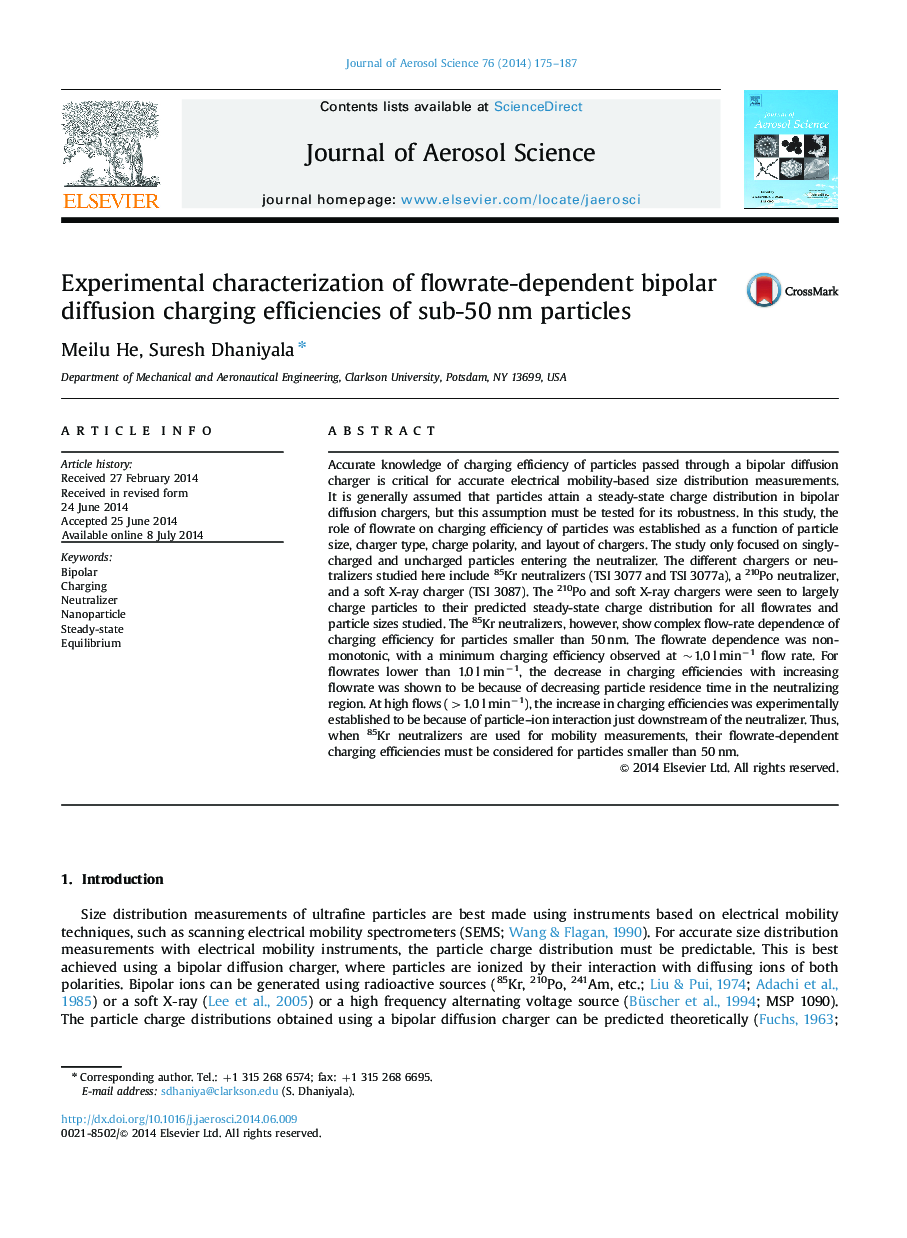| Article ID | Journal | Published Year | Pages | File Type |
|---|---|---|---|---|
| 4452320 | Journal of Aerosol Science | 2014 | 13 Pages |
•Experimental measurements of charging efficiencies of sub-50nm particles.•The 74 MBq85Kr neutralizer has a minimal charging efficiency at ~ 1.0 l min-1.•Flowrate dependence of charging efficiency increases with decreasing particle size.•No flowrate dependence observed for 210Po, 370 MBq 85Kr and soft x-ray chargers.
Accurate knowledge of charging efficiency of particles passed through a bipolar diffusion charger is critical for accurate electrical mobility-based size distribution measurements. It is generally assumed that particles attain a steady-state charge distribution in bipolar diffusion chargers, but this assumption must be tested for its robustness. In this study, the role of flowrate on charging efficiency of particles was established as a function of particle size, charger type, charge polarity, and layout of chargers. The study only focused on singly-charged and uncharged particles entering the neutralizer. The different chargers or neutralizers studied here include 85Kr neutralizers (TSI 3077 and TSI 3077a), a 210Po neutralizer, and a soft X-ray charger (TSI 3087). The 210Po and soft X-ray chargers were seen to largely charge particles to their predicted steady-state charge distribution for all flowrates and particle sizes studied. The 85Kr neutralizers, however, show complex flow-rate dependence of charging efficiency for particles smaller than 50 nm. The flowrate dependence was non-monotonic, with a minimum charging efficiency observed at ~1.0 l min−1 flow rate. For flowrates lower than 1.0 l min−1, the decrease in charging efficiencies with increasing flowrate was shown to be because of decreasing particle residence time in the neutralizing region. At high flows (>1.0 l min−1), the increase in charging efficiencies was experimentally established to be because of particle–ion interaction just downstream of the neutralizer. Thus, when 85Kr neutralizers are used for mobility measurements, their flowrate-dependent charging efficiencies must be considered for particles smaller than 50 nm.
